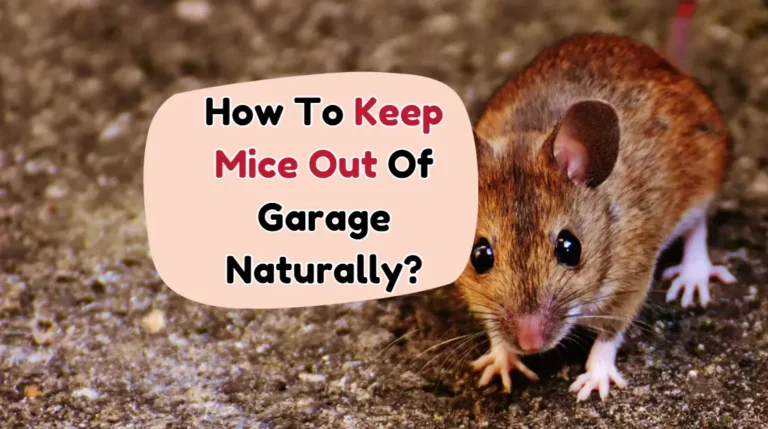How to Get Rid of Carpenter Bees can feel overwhelming, especially when those tiny drillers start turning your home into Swiss cheese.
“A stitch in time saves nine,” they say, and nothing could be truer when dealing with these silent destroyers.
I discovered their damage too late, but you don’t have to.
Let me walk you through exactly how I took control quickly, naturally, and without hiring an expensive exterminator.
What Are Carpenter Bees?

Before acting, I did my homework, and I’m glad I did. I discovered those large “bumblebees” were actually carpenter bees.
Unlike termites, they don’t eat wood, but they tunnel into it to nest, especially in untreated or unpainted wood.
You’ll find them drilling perfect round holes in decks, eaves, and railings.
Over time, this weakens the structure, especially with repeated use of tunnels.
Want to know how to get rid of carpenter bees? Act early before the damage becomes costly.
Suggested Read: How To Keep Cockroaches Out Of Your Kitchen Drawers(12 Tips
How I Realized I Had a Carpenter Bee Infestation
The first sign was the appearance of those tidy, round holes on my back porch.
Then I started noticing fine sawdust sprinkled on the floor beneath the beams.
Eventually, I even spotted a lone bee hovering near one of the holes.
Upon closer inspection, I realized there were several holes.
A few even had fresh wood shavings around them, which meant the infestation was active.
I knew I had to act fast, before they multiplied or did irreversible damage.
Suggested Read: Can Bed Bugs Live in Leather Couches? You’ll Be Shocked!
The First Line of Defense: how to get rid of carpenter bees
I took a few days to study their habits. I found that carpenter bees are most active during the spring.
That’s the best time to act because you can prevent them from laying eggs and starting a new cycle.
They also favor unpainted, weathered wood. That’s why my old cedar deck was their target.
This bit of information helped me formulate a plan that combined with repelling them naturally.
Suggested Read: 19 Effective Homemade Roach Killer Tips That Work Instantly!
how to get rid of carpenter bees: My Step-by-Step Elimination Plan
Step 1: Apply Insecticidal Dust
I bought a bee-safe insecticidal dust recommended for carpenter bees. In the evening, when the bees were inactive, I used a duster to puff the dust deep into every visible hole. This is crucial; doing it during the day might provoke them and reduce effectiveness. The dust clings to the bees as they enter or exit, eventually eliminating them without needing to directly kill every one.
Step 2: Plug the Holes to get rid of carpenter bees
After applying the dust, I waited about 72 hours to ensure all bees inside were exposed. Then, I sealed each hole with wooden dowels and wood filler. You can also use steel wool first for extra protection. After sealing, I sanded down the patches and painted over them. Sealing holes is important not just to prevent re-entry but to discourage future bees from using the same tunnels, which they often do.
Suggested Read: How To Get Rid Of Earwigs: 27 Quick Fixes You Can’t Miss!
Step 3: Install Carpenter Bee Traps
These traps are surprisingly simple, they’re made of wood with a hole similar to those the bees make, leading into a plastic container where the bees get trapped. I placed a few near the previous nesting sites, and within a week, I had captured several carpenter bees. I kept these traps up through the season and reused them every spring.
how to get rid of carpenter bees naturally: 10 Ways I Tried to Deter!
Wanting to avoid chemicals as much as possible, I also turned to natural remedies.
Here are the 10 methods I found most effective:
1. Citrus Oil Spray
Carpenter bees hate the scent of citrus. I boiled citrus peels (lemons, oranges, and limes) in water for about 10–15 minutes, let the mixture cool, then strained and poured it into a spray bottle. I sprayed it on wood surfaces and inside the nest holes.
2. Almond Oil to get rid of carpenter bees
The smell of almond oil repels carpenter bees effectively. I used a few cotton balls soaked in almond oil and stuffed them into the holes. The strong scent made the bees flee the area.
Suggested Read: 45 Crazy Ways How To Get Rid Of Wood Boring Bees Overnight
3. Vinegar Spray for carpet bees
I mixed equal parts white vinegar and water in a spray bottle. I used this solution to spray directly into nesting holes and around wooden surfaces. The sharp scent of vinegar irritated the bees and discouraged them from staying.
4. Peppermint Essential Oil to get rid of carpenter bees
Peppermint oil is another natural deterrent. I mixed 10–15 drops of peppermint oil with water and sprayed it liberally on my wooden structures. The bees couldn’t stand the smell, and soon they moved on.
5. Tea Tree Oil Spray
Tea tree oil is a powerful remedy. I combined it with water and sprayed the solution around my deck and any areas with visible holes. The scent drove the bees away without causing harm.
6. Garlic and Vinegar Mix
I crushed several cloves of garlic and soaked them in white vinegar for about two days. The pungent smell created an environment that carpenter bees disliked. I used this homemade spray on my porch and the beams they were targeting.
7. Cinnamon Powder to get rid of carpenter bees
I sprinkled cinnamon powder around the areas where I saw carpenter bees entering and exiting. Cinnamon can be used as a preventive measure, and the bees hate the strong aroma, which makes them stay away.
8. Eucalyptus Oil to get rid of carpenter bees
Eucalyptus oil is another bee-repelling scent that worked for me. I diluted it with water and sprayed it near the nesting sites. Eucalyptus oil kept bees at bay and deterred them from nesting again.
9. Boric Acid Powder
While more aggressive than the other methods, boric acid powder works effectively for severe infestations. I carefully applied small amounts into the holes after the bees were inactive. The powder coats the bees and eventually kills them.
10. Noise and Vibration
This was a more unconventional method, but it worked! I used a small vibration device placed near the nesting site to deter the bees. The vibrations irritated them enough to make them look for a new place to nest.
Suggested Read: How To Get Rid Of Blister Beetles: 24 Insane Tricks To Work!
11. Preventing Future Infestations
Once I dealt with the infestation, I focused on prevention. Carpenter bees are persistent, and unless you make your home less inviting, they may come back.
12. Paint and Seal All Exposed Wood
I painted every inch of the deck, railings, and even the undersides of boards with high-quality, oil-based paint. Unlike stained or raw wood, painted surfaces are much less attractive to carpenter bees.
13. Use Harder or Synthetic Materials
For areas that needed replacing, I used pressure-treated lumber or composite decking, which are less appealing to carpenter bees.
14. Maintain Regular Inspections to get rid of carpenter bees
Now, every spring, I do a full inspection of my property. If I spot a new hole, I repeat the dusting and sealing process before it becomes a bigger problem.
Suggested Read: Does Bleach Kill Spiders? Learn How Effective And Safe It Is
When to Call a Professional
In my case, I was able to handle it myself with time and patience. But if:
- You’re allergic to bee stings
- The infestation is widespread
- There are bees inside the walls or in high areas
- It’s best to call pest control professionals.
They have stronger treatments and equipment to handle infestations safely.
Suggested Read: 15 Indoor Plants That Keep Roaches Away: The Ultimate Fix!
Final Thoughts: how to get rid of carpenter bees
Getting rid of carpenter bees isn’t about destroying nature; it’s about maintaining balance. These bees are excellent pollinators and have their place in the ecosystem. But that place isn’t inside your deck posts or porch rafters.
The combination of education, natural deterrents, physical elimination, and long-term prevention worked for me. If you’re facing a similar situation, I hope my journey provides a clear, actionable path to protect your home without compromising your values.
Suggested Read:
Suggested Reads:
















One Comment